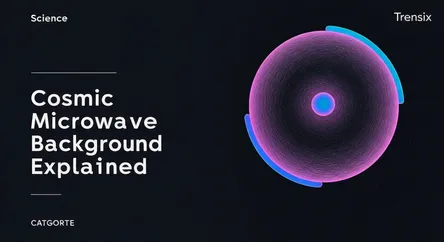Science
Cosmic Microwave Background Explained

Discover the Cosmic Microwave Background (CMB), the faint afterglow of the Big Bang that provides a snapshot of the early universe and its origins.
What is it?
The Cosmic Microwave Background (CMB) is the faint, leftover radiation from the Big Bang, which permeates the entire universe. It is essentially the afterglow of creation, dating back to when the universe was just 380,000 years old. Before this time, the universe was a hot, dense, opaque plasma. As it expanded and cooled, protons and electrons combined to form the first neutral atoms, allowing light to travel freely for the first time. The CMB is that ancient light, stretched into microwave wavelengths by the subsequent expansion of the universe over 13.8 billion years.
Why is it trending?
The CMB remains a hot topic because it is the strongest evidence supporting the Big Bang theory. Modern observatories like the Planck satellite and ground-based telescopes continue to map its tiny temperature fluctuations with incredible precision. These minuscule variations are cosmic fossils, representing the initial seeds from which all galaxies and large-scale structures grew. Studying the CMB helps scientists refine our understanding of the universe's age, composition (including dark matter and dark energy), and its ultimate fate.
How does it affect people?
While the CMB has no direct impact on daily life, its discovery and study fundamentally changed humanity's understanding of our cosmic origins. It provides a direct look at the infant universe, answering profound questions about where we come from. The pursuit of this knowledge drives technological innovation; the highly sensitive detectors developed to measure the CMB have found applications in fields like medical imaging and telecommunications. Ultimately, the CMB is a testament to human curiosity and our ability to piece together the history of the cosmos.